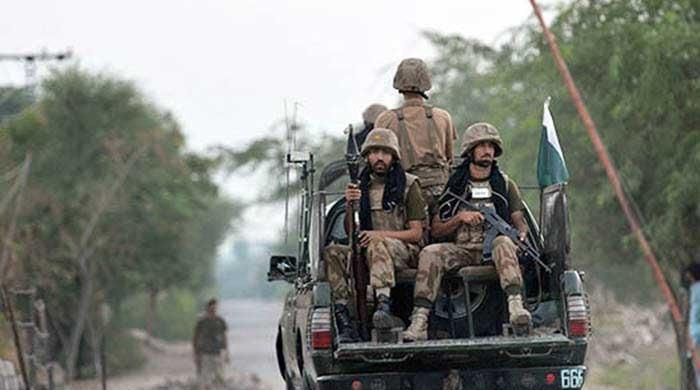Last week, South Asia changed on the verge of disaster while India and Pakistan were committed in four days of intense air strikes, reviving fears of a nuclear confrontation between these long -standing competitors.
This most severe escalation since the 1971 war caused urgent international action. On May 10, a commercial cease-fire in the United States brought the two nations on the edge, avoiding what could have been a devastating conflict. A 2019 study on scientific advances warned that a nuclear exchange between India and Pakistan could kill millions and trigger global climatic disturbances. The fragility of this truce, tainted with mutual accusations, disinformation and deep distrust, projects a shadow on the stability of the region.
The crisis began on April 22, 2025, when a terrorist attack in Pahalgam, occupied the cashmere, cost dozens of tourists. India, attributing the attack to Pakistan activists, launched Operation Sindoor on May 7. Rafale Jets bombed targets inside Pakistan, Indian officials claiming surgical clarification against terrorist infrastructure. Pakistan, however, presented a different story, with bombed villages and alleging civil death. The situation degenerated further on May 9, when the Indian media wrongly declared that the Indian Navy had erased the port of Karachi and other Pakistani cities – later affirms demystize but which ignited nationalist feelings and eroded the credibility of India abroad.
Disinformation has proven to be a powerful weapon in this conflict, amplifying tensions and complicating the efforts of de -escalation. The reports made of naval strikes on Karachi illustrate how the uncontrolled stories can lead to public opinion and put pressure on governments in hard positions. At a time when social media amplifies lies, such distortions may transform skirmishes into large -scale wars. All this only makes at home the need for verifiable communication to counter chaos sown by false news.
The United States intervened as a critical mediator while the conflict has invaded. The most alarming climbing of the conflict came with the India strike at the Pakistan Nur Khan air base in Rawalpindi – just 10 kilometers from Islamabad and near the Pakistani military seat. In a few hours, Pakistan launched a large-scale counter-offensive.
According to the Pakistani army, he targeted 26 Indian military installations which were involved in strikes against Pakistani civilians and infrastructure. These include Air Force and Army installations in Suratgarh, Sirsa, Adampur, Bhuj, Naliya, Bathinda, Barnala, Harwara, Avantipur, Srinagar, Jammu, Mamoon, Ambala, Udhampur and Pathankot. Pakistan claimed to have inflicted substantial damage.
Following climbing, the Trump administration – initially hesitating to intervene – reversed the course in the midst of increasing fears of a nuclear conflict. The talks resulted in a cessation of hostilities, marking a diplomatic breakthrough, highlighting America’s ability to defuse an imminent crisis.
While Pakistan has publicly praised American efforts, India has minimized the role of Washington. According to CNN, President Donald Trump announced the ceasefire on May 10, via Truth Social, creating American diplomacy to stop violence and express the hope of a long-term resolution, in particular on the question of cashmere. In particular, the ceasefire was unconditional and the industrial water Treaty remains suspended.
Despite this breakthrough, the ceasefire remains tenuous. In the hours following the agreement, the Secretary of Foreign Affairs of India, Vikram Misri, accused Pakistan of drone and bombing incursions along the loc – accuses Pakistan with vehemence. These Tit-For-Tat allegations highlight sustainable mistrust that afflicts Indian-Pakistani relations. India’s insistence on the treatment of cashmere as a bilateral problem, anchored in the 1972 simla agreement, comes up against the reality of international involvement, adding another layer of complexity to the peace process. Meanwhile, Pakistan’s dependence on J -10 fighters applied by Chinese – more than 50 of which strengthen its air force – signals a deepening strategic alignment with Beijing, a dynamic that disturbs New Delhi.
Former Indian Army leader Manoj Naravane, speaking to Pune on May 12, offered a perspective that gives reflection on the conflict. He warned: “War is not romantic. This is not your Bollywood film. It is a very serious affair … we must not encourage. ” Naravane underlined the deep human toll, especially on civilians caught in cross fires. He spoke of children who lasted the bombing, their trauma a burden “transported through generations” and urged diplomacy as the “first choice” on military action. His words resonate with the austere warnings of experts, who believe that a nuclear war between these nations could devastate global food supplies for a decade.
The 2025 confrontation revealed critical military disparities. The 86 billion dollars’ defense budget in India far exceeds $ 10 billion in Pakistan, but its air defenses remain obsolete, with only 24% modernized. Arsenal smaller but supported by Pakistan China, including the Agile J-10 fighters, exploited these gaps, hitting Indian bases with precision. The gap of India in military modernization contrasts with its ambitions as a regional power, while Pakistan’s dependence on Chinese risks which engaged in broader geopolitical rivalries. The nuclear capacities of the two nations – India with more than 160 warheads and Pakistan with a similar arsenal – amplify the issues, making de -escalation an urgent priority.
In order for the ceasefire to undergo, India and Pakistan must go beyond temporary trues. The revival of trade, interrupted since 2019, could establish economic ties that dissuade hostility. Bilateral talks, potentially facilitated by the United States, are essential to solve cashmere and security problems. International actors, including China, who reported a deduction through its Global Times editorial, could strengthen stability. Without such steps, the risk of peace marketed in the United States collapsed, reviving a conflict with catastrophic potential.
The Crisis of India-Pakistan in May 2025 is a timely reminder of the volatility of South Asia. The American intervention avoided an immediate disaster, but the peace of the region is suspended by a thread, threatened by a disinformation, military rupture and unresolved grievances.
As General Naravane warned, war has no romance – only suffering and loss. Souted diplomacy, based on truth and mutual interest, is the only way to prevent a return to the abyss. In a world where false news can ignite wars, the two nations must prioritize restraint and dialogue to obtain a future without spectrum of annihilation.
The writer is the former head of investment in emerging markets of Citigroup and author of “The Gathering Storm”.
Warning: The points of view expressed in this play are the own writers and do not necessarily reflect the editorial policy of PK Press Club.TV.
Originally published in the news




